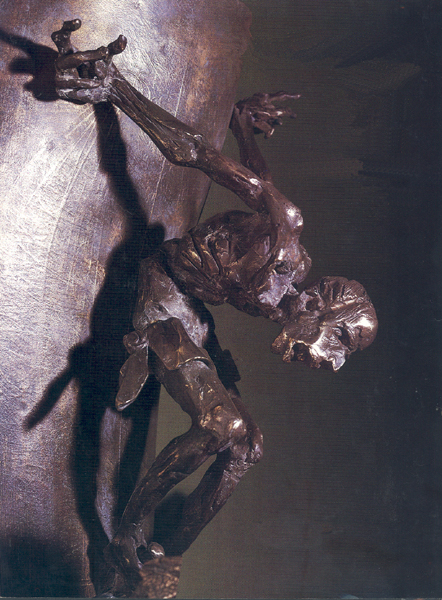Image Details

Boltin Picture Library
Writhing in anguish, an emaciated Jesus wrenches himself from the cross in this bronze “Crucifixion” (1933), by Floriano Bodini. The sculptor captures Jesus’ final tortured moments on the cross, as presented in the Gospel of Mark: “Jesus cried out with a loud voice, ‘Eloi, Eloi, lema sabachthani?’ which means ‘My God, My God, why have you forsaken me?’…then gave a loud cry and breathed his last” (Mark 15:34, 37). For Mark and sculptor Bodini, the crucifixion begins and ends in agony. But the same is not true of all the gospels, in which Jesus’ behavior ranges from calm acceptance to suffering and torment, notes author John Dominic Crossan. While all the gospel writers reflect on the same events in the life of Jesus, each presents these events in a manner meaningful to his own place and time, suggests Crossan. Mark’s anguished Jesus, for example, served as a model for Mark’s own persecuted community.
Although Luke Johnson, in a recent BR article and book (see “The Search for (the Wrong) Jesus”), has denounced the search for the historical Jesus as wrong and misguided, Crossan suggests that the gospel format used by Matthew, Mark, Luke and John provides the model for each generation to reconsider the historical Jesus and to reinterpret its meaning anew, thus providing a standard for Christian inquiry today.
